| 1 | Eastern stripe-bellied sand snake |
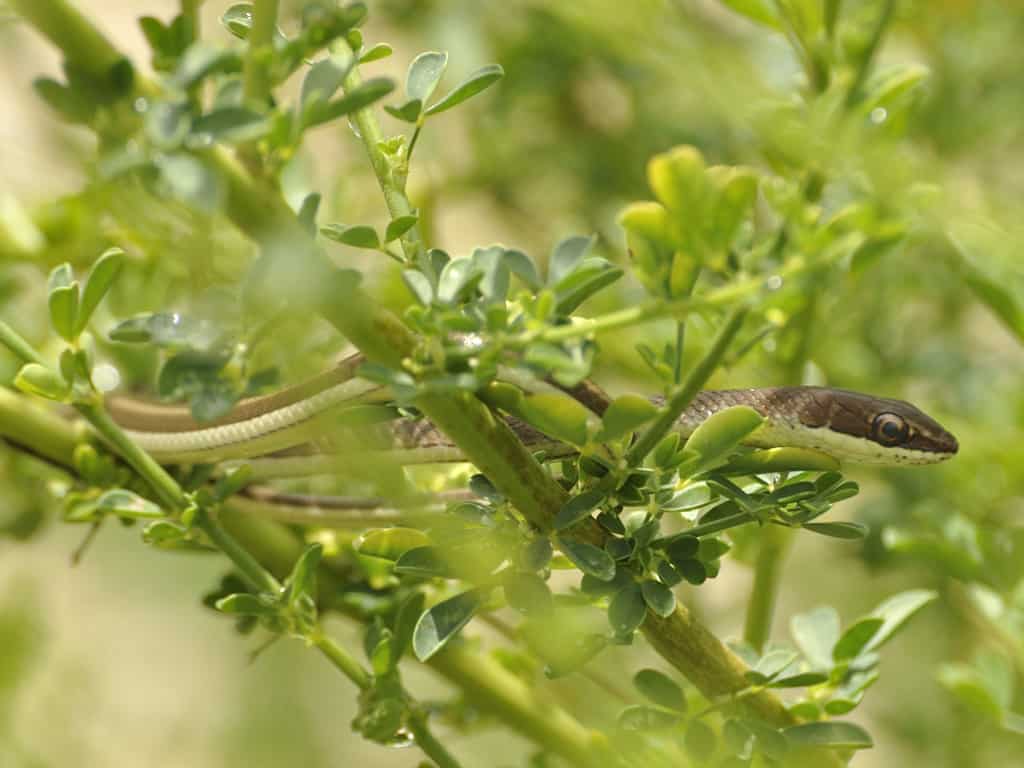
A harmless snake which rarely attacks people, and tends to hide in dry shrubs when concerned for its life. Eastern stripe-bellied sand snakes (Psammophis orientalis) reach a maximum of 1.4 metres, with an average of 50-80cm. They live in moist savannahs with wide open surroundings, and like other Psammophis members, they’re extremely fast and twitchy.
Eastern stripe-bellied sand snakes secrete a rear-fanged venom, but would struggle to severely damage a human even if they chewed for long periods. Speed and agility are their survival secrets, not all-out assault. If it really concentrated, this snake would probably have enough speed to slither between the legs of a charging rhino and not get trampled.
Eastern striped-bellied snakes aren’t especially memorable in colour, but do have a sharp split between a cream/yellow belly and a duller, darker back. You can find this species from southern Mozambique, through Malawi and Tanzania to southern Kenya. They feed heavily on skink lizards, with one being the variable skink. Bird and mammal prey have also been observed.
This snake was originally a mere eastern subspecies of the western yellow-bellied sand snake (P. subtaeniatus), but was declared to be an independent species in 2002. This happened because scientists noticed that the two coincided in southern Zimbabwe without interbreeding.
| 2 | Brown forest cobra |
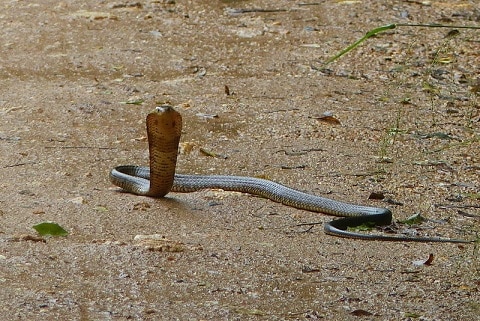
The largest cobra species in southern Africa, with a record length of 269cm. The brown forest cobra (Naja subfulva) is closely related to the main forest cobra (N. melanoleuca), and was originally assigned as one of its subspecies, before being split off in 2018.
Brown forest cobras can be found roaming savannah, woodlands and forests. Despite their brute size, this is a shy species which defaults to fleeing. They move around cautiously and intelligently, unlike the rhombic skaapsteker, which zooms around the savannah as though it owns the place. Unlike a cobra cobra, they rarely appear on beaches and cause holidaygoers to scatter.
Brown forest cobras bite people only rarely, though they’re easily capable of rotting flesh. Their venom has neurotoxic qualities, but isn’t anything unique for a cobra, as the standard African cobra antivenom works well against them. When pushed, brown forest cobras behave similarly to other species and rear up with an intimidating neck flare.
Brown forest cobras inhabit most of Mozambique, excluding drier portions of the south. They’re usually a consistent brown, with a few paler markings, but they gradually darken as the tail approaches.
| 3 | Fornasini’s blind snake |
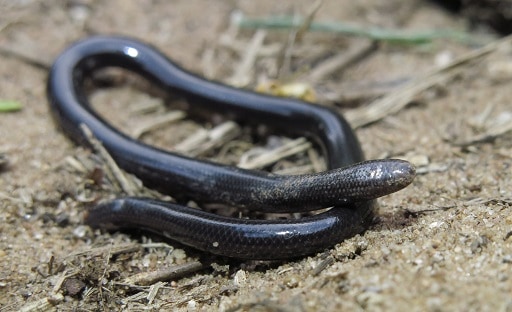
A species of southern Mozambique and the extreme east of South Africa. Fornasini’s blind snake (Afrotyphlops fornasinii) measures just 15cm, with a maximum of 18cm, making them one of the smallest African snakes. They also have some of the most miniscule dots for eyes of any snake. This is a classic blind snake, a snake whose eyes have become redundant and gradually shrunk over millions of years, due to their underground lifestyle.
Rather than forests, this species prefers to hide in open areas like savannahs, grassland or sparse bushland. Fornasini’s blind snakes have virtually no patterns, just a consistent black, which makes it easy to confuse them with dangerous stiletto snakes. This species lives alongside elephants, zebras and giraffes, but out of sight, just below the surface. They’re also one of the shiniest snakes in existence, reflecting a tourist guide’s torch and a car’s headlights alike.
This species might win a battle with a brown forest cobra, for the simple reason that the cobra would probably lunge and miss the tiny target. Fornasini’s blind snakes are barely researched, but they’re assumed to prey on worms and maybe ants.
| 4 | Eastern vine snake |
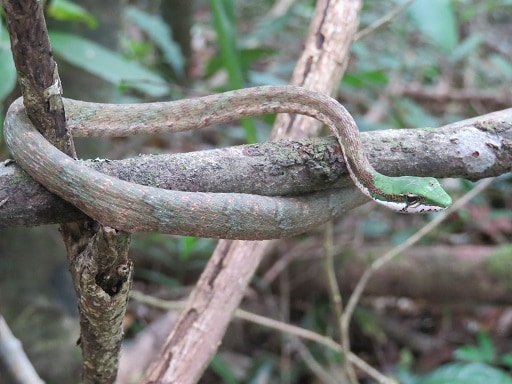
A snake which chose to live in branches long ago, and slowly started to resemble a branch itself. The eastern twig snake is most common in northern Mozambique and eastern Zimbabwe. Bites are rare, but its bite is dangerously haemotoxic, and can cause spontaneous, uncontrolled bleeding in serious cases. Finding an eastern twig snake is hard in Mozambique, not because they’re rare, but because their camouflage is so effective.
Eastern twig snakes measure 100-120cm, with a record of 143.5cm. If you do find one, they’re easy to recognise. Their eyes are particularly amazing, as the pupil is bizarrely shaped, like a keyhole. They have a green skull cap, which contrasts vividly against the body. This greenness extends to the upper half of the eye untouched, but a brown stripe runs along their flanks, which continues untouched through the centre of the eye.
Eastern vine snakes are also recognisable by an orange tongue. They often engage in warfare with birds, which mob them in a flock of squawking and feathers.
Eastern twig snakes (Thelotornis mossambicanus) have no grudge against humans, but will get extremely enraged if you interrupt their favourite activity: resting aimlessly on branches. This species generally prefers low lying shrubs to towering branches 20 metres high.
| 5 | Mozambique shovel snout |
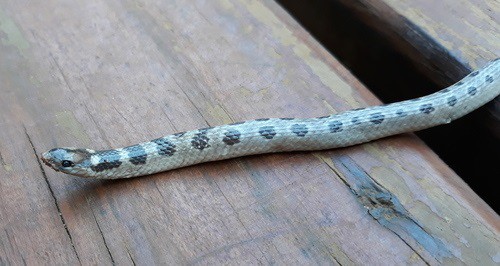
This harmless species mainly lives in southern Mozambique, as well as extreme eastern South Africa. Mozambique shovel snouts (Prosynma janii) are found in coastal forests and moist inland savannah, the unifying feature being soft soils to dig in. This species has been blessed with supreme burrowing skills, which are all thanks to its namesake shovel snout.
Mozambique shovel-snouts are most commonly sighted by ordinary people on roads. They’re attracted to sand, but also thick layers of mulchy leaf litter. Though a great digger, they rarely venture far below the surface, instead staying in the loose upper layers.
Mozambique shovel snouts average at 25cm, with a maximum of just 31cm. This species is completely non-venomous; they’re not one of those deceptive snakes which hides a savage venom behind its diminutive size. When confronted, they use intimidation tactics, raising their upper body into the air and swaying it back and forth rhythmically, with their mouth hanging open.
Originally, Prosynma janii (and other shovel snouts) were thought to prey on reptiles. This was repeated so commonly that everyone assumed it was true, not thinking to question it. But one day, scientists decided to investigate old museum remains and their stomach contents. They discovered that snakes of the Prosymna genus overwhelmingly feasted on reptile eggs, mostly soft shelled, but also harder gecko eggs. For Prosymna janii itself, 4 reptile eggs were discovered. Their digging skills probably evolved to help them find these eggs.
| 6 | Marbled tree snake |
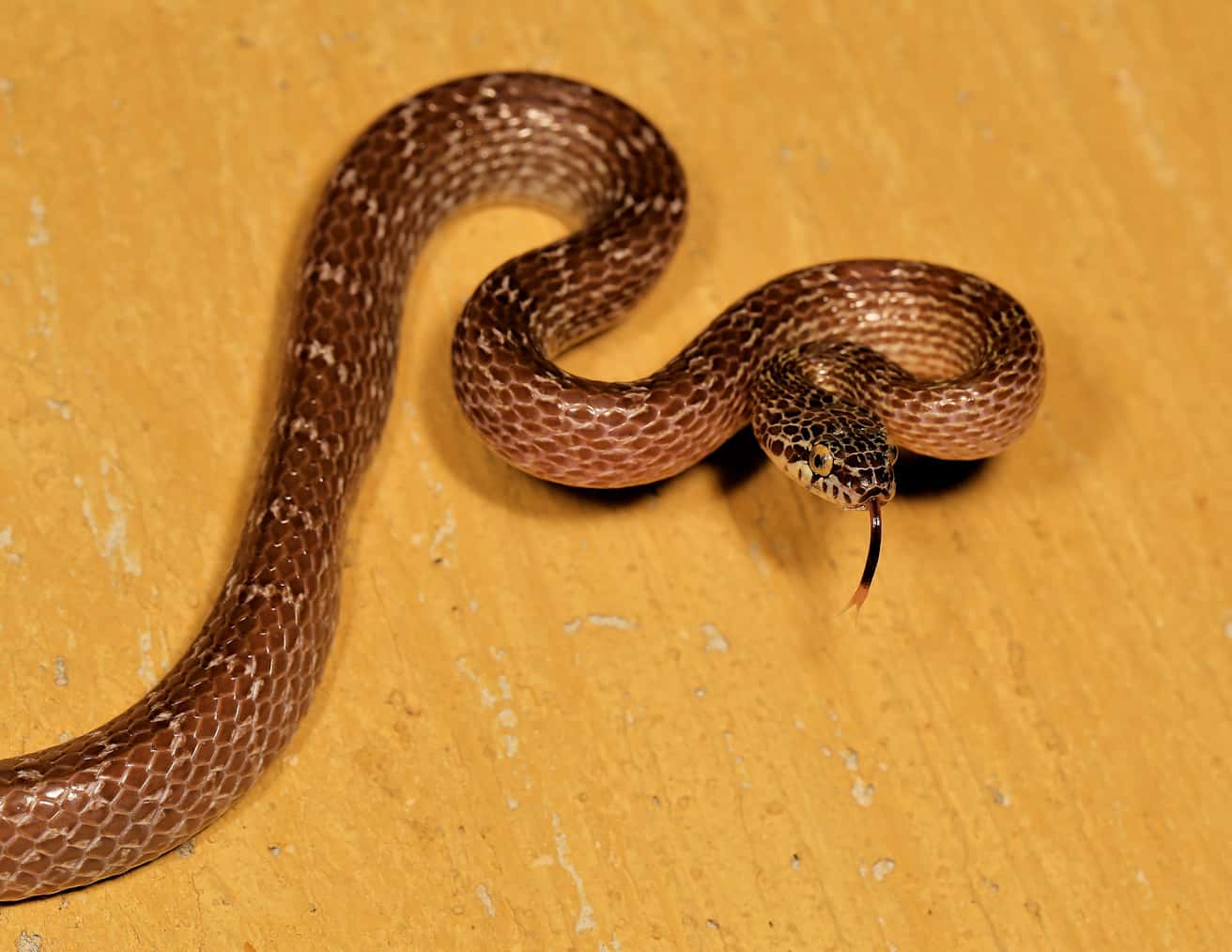
The marbled tree snake (Dipsadoboa aulica) ranges from the extreme east of South Africa, through the vast majority of Mozambique. This is a mildly venomous snake which reaches a maximum of 85cm, and mainly appears in moist savannah and lowland forests, including classic safari country.
Disadoboa aulica cannot kill a human, but somewhere along the way, they’ve learnt to mimic vipers, not in appearance but manner. When cornered, marbled tree snakes throw themselves into an s-shaped coil with their upper body raised up. They cock their heads at the neck to face their aggressor head on, in an identical manner to rattlesnakes and adders. This is a nocturnal species, and during the day, they stash themselves in gaps between tree bark. From here, they can watch the savannah go by from safety, with a clearer view than any expensive safari.
Marbled tree snakes are rare for having a clear white tip of the tongue, with the lower half black. The reasons have never been researched, but it’s possible that marbled tree snakes wiggle the end to lure in prey, which greedily mistake it for buzzing insects. Marbled tree snakes have many colourful details to pick out. There’s golden eyes with a vertical pupil, while their bodies alternate between snowy white and black, just like their tongue.
Marbled tree snakes don’t have the fastest reflexes and sometimes end up as roadkill, with a grisly tire mark over their back. They prey on reptiles, one confirmed being Setaro’s dwarf chameleon, which it swallows by the tail.
| 7 | Puff adder |
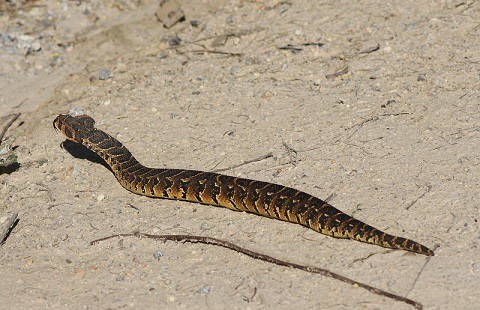
A thick, fat viper which measures up to 190cm, but is generally around 1 metre. Puff adders (Bitis arietans) are the most widespread venomous snake in sub-Saharan Africa, and Mozambique is no exception to this rule. Statistics reveal that this species causes the highest number of snakebites in Mozambique. Its venom has few neurotoxins, but is rich in flesh-destroying cytotoxins.
In 2022, a study finally examined snakebite data from villages all over Mozambique. Before this, the Mozambique snake situation had barely been researched in an actual scientific analysis, just with whispers and rumours.
The study concluded that farmlands were the most likely place to be bitten, and that puff adders were the top culprit, just ahead of stiletto snakes. Black mambas caused far fewer bites on farms, but greater amounts in villages. On the brighter side, most puff adder victims made it to hospital, while black mamba venom acted so rapidly that many Mozambique victims died within one hour.
There was one safe haven from the puff adder: households. Here, the stiletto snake and Mozambique spitting cobra dominated the danger statistics. The latter has a horrific tendency to bite people when sleeping, sneaking into their bedrooms in the dead of night, but puff adders hardly ever invade households. They’re lazy ambushers rather than explorers. Farmland and the outskirts of forests are their main hotspots, though they’re a highly flexible species which can even appear on beaches.
Overall, the study reached a dire conclusion: that 319 Mozambique citizens die of snakebite annually, out of 20,000-30,000 across Sub-Saharan Africa.
| 8 | Semiornate snake |
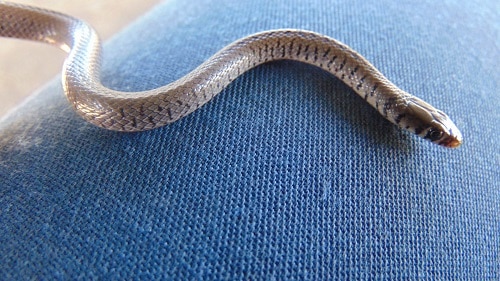
A shy snake which is always found in shelter, sometimes near water, at elevations of up to 2500 metres. Semiornate snakes (Meizodon semiornatus) range from extreme northeast South Africa to southern Kenya, also including Mozambique, Zimbabwe and Tanzania. Semiornate snakes might not be able to forecast the weather, or spit venom in people’s eyes, but when it comes to detecting places they can disappear, they’re unbeatable.
Semiornate snakes can be found lurking under logs, stones, vegetation corridors, and thick weeds at the edges of streams. This makes them difficult to find, though they’re not rare or even close to endangered. This snake loves cover, and will never be found striding majestically alongside a herd of zebra across open plains. If caught, then they usually flee instantly rather than stand their ground.
The longest semiornate snake ever measured 76.7cm, a female from Tanzania. The longest male measured 61.9cm, also from Tanzania. Semiornate snakes are simple to recognise as younglings, as their black and grey crossbands resemble few other snakes in the southern African region. But with age, these blend together into a monolithic grey blob. Their faces also have white markings which gradually shrink in size.
| 9 | Southern quill-snouted snake |
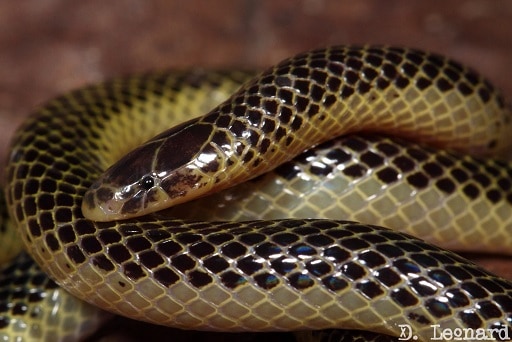
A harmless species recognisable by its pointy snout, which you could probably write letters with if you dabbed it in ink. Southern quill-snouted snakes (Xenocalamus transvaalensis) prefer sandy areas of southern Mozambique, and move only slowly, patiently inspecting leaf litter for prey.
This species has tiny black eyes and averages at just 30cm long, with a maximum of 47cm. Southern quill-snouted snakes are always yellow and black, but this varies in proportion. Sometimes they’re black, shiny yet bland, while in other individuals, the yellow between the scales expands and the black sections shrinks to dots.
This snake is believed to feed on reptiles, specifically limbless skinks. In southern Mozambique, they overlap (but don’t interbreed) with another of their family members: the slender quill-snouted snake (Xenocalamus bicolor).
Instead of being a roaring, majestic 600 pound beast, which looks cool but attracts the attention of virtually every killer in the savannah, Xenocalamus transvaalensis prefers to stay quiet and fly under the radar. This snake would rather be intelligent than crazed and blundering.
Another interesting characteristic of this species is its eggs. Some snakes lay dozens of eggs, as insurance against hungry alligators or eagles. The mud snake of Florida can lay over 100 at once, but quill-snouted snakes lay two large eggs instead, which are elongated and measure 28 x 6mm.
| 10 | Southern vine snake |
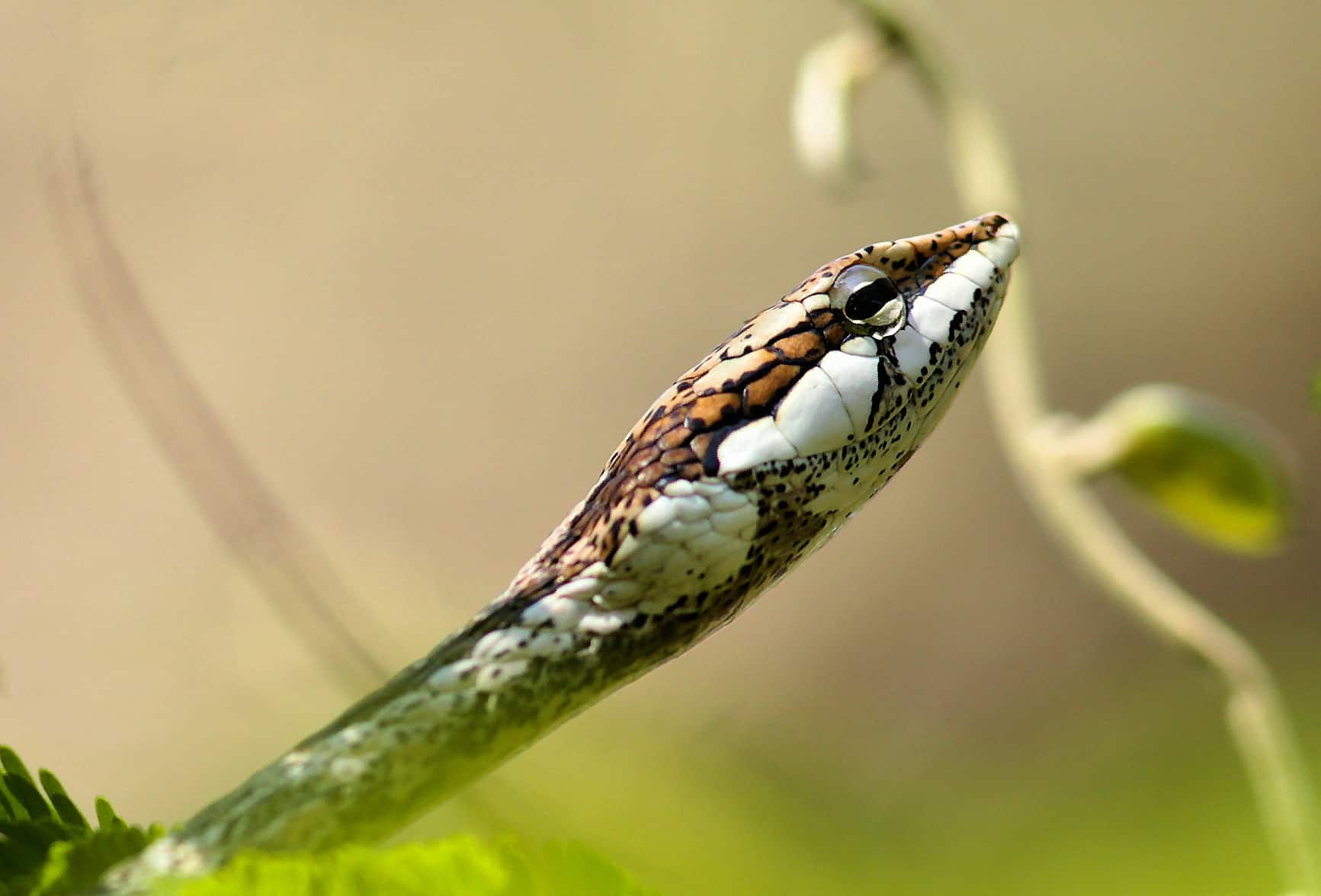
Part of the same Thelotornis genus as the eastern twig snake. The weird keyhole pupils are identical, as are their branch-loving habits, yet their colouring is significantly different. While both are brown and parched-looking like a tree branch left out in the sun, this species is missing the grassy green head that the eastern twig snake has.
Like their cousin, this species appears in woods and tree clumps intermingling with villages rather than dense rainforests. In terms of territory, the southern twig snake (Thelotornis capensis) lives in South Africa and pushes northwards, while eastern twig snakes range from Kenya southwards. The two just meet in the middle, meaning that Mozambique and Zimbabwe contain both species.
The longest ever southern vine snake measured 168cm. This species also produces a nasty venom, with a variety of anticoagulant toxins, and no dedicated antivenom in existence. In one study, scientists tried and failed to use boomslang antivenom on a 13 year old victim. This boy wasn’t charged at, but had tried to catch the snake in his hands, as it slithered smoothly through a bush. Three tiny puncture wounds were visible, and the boy complained of abdominal pain and was hyperventilating.
After 5 hours, his blood was totally incoagulable, with prolonged bleeding, but at 20 hours post bite, this had resolved. The boy was fine at a 6 day follow up, and escaped with no serious injuries.
